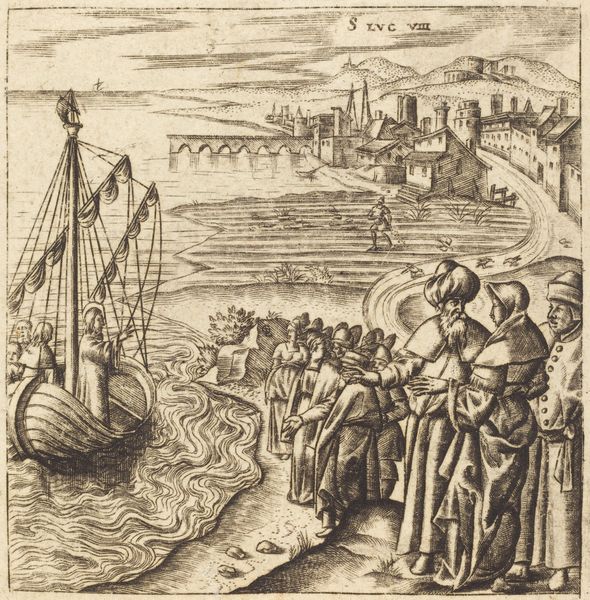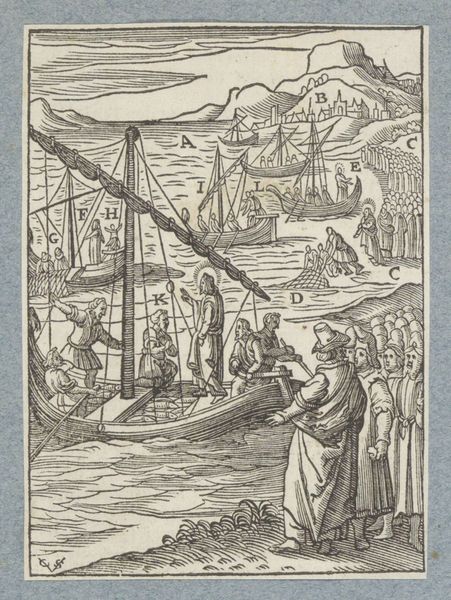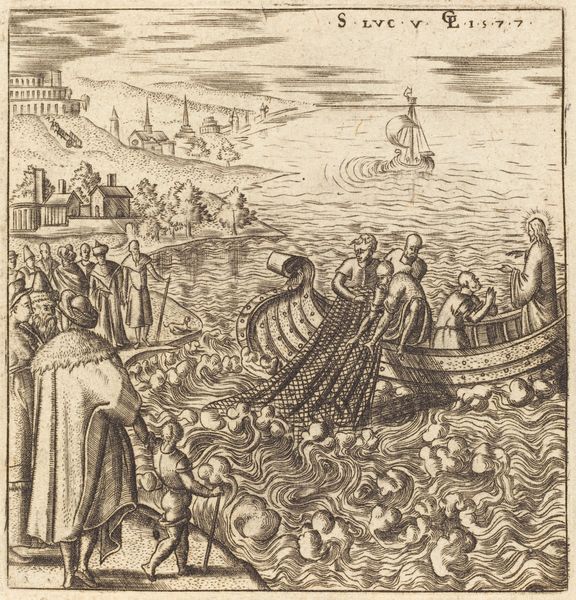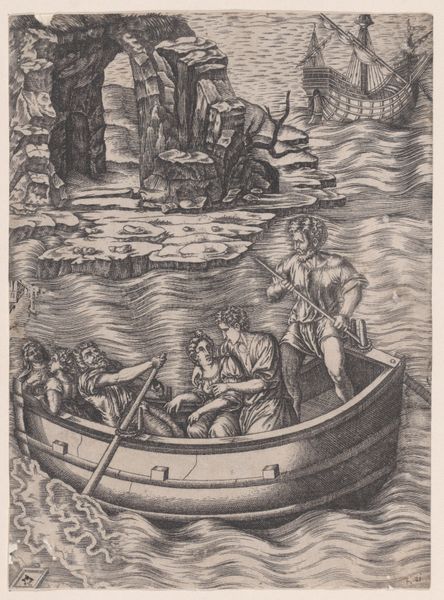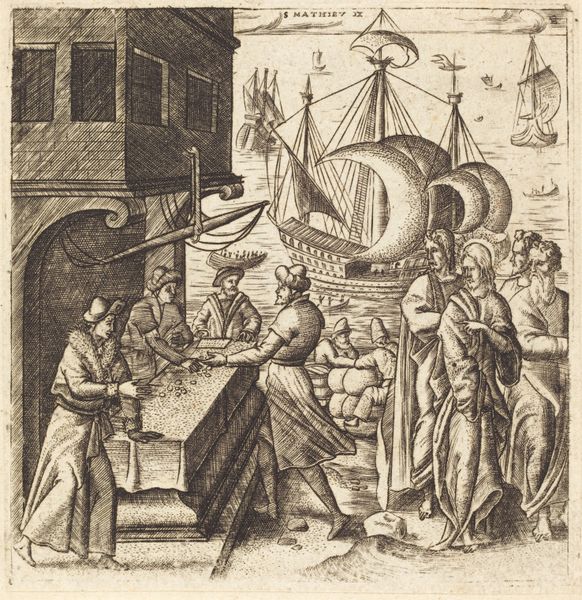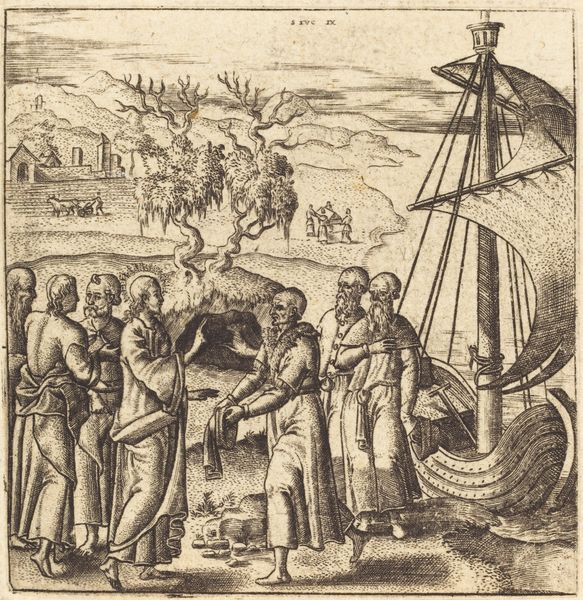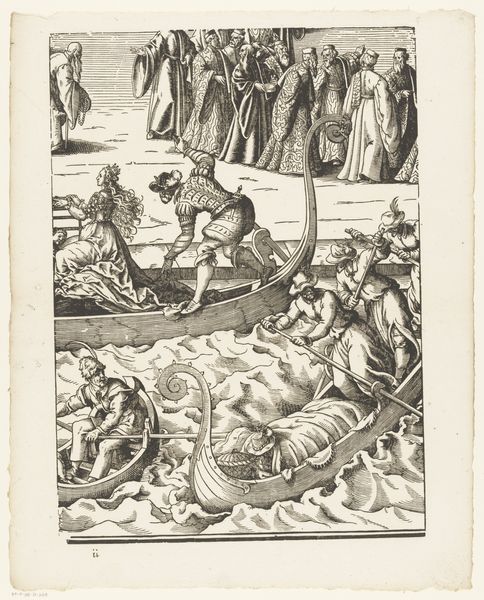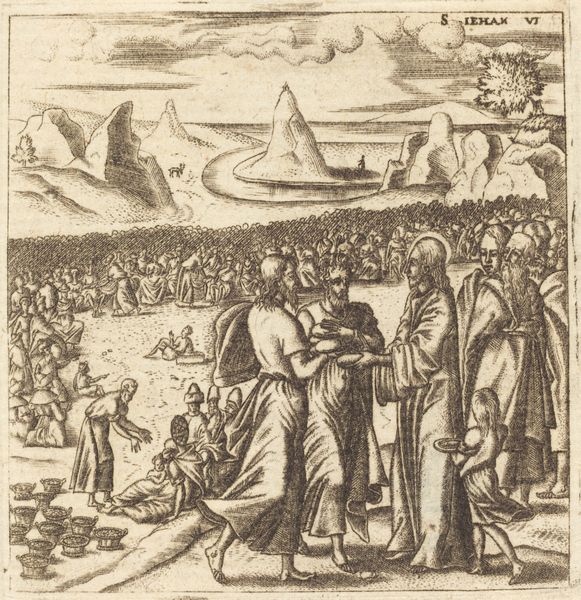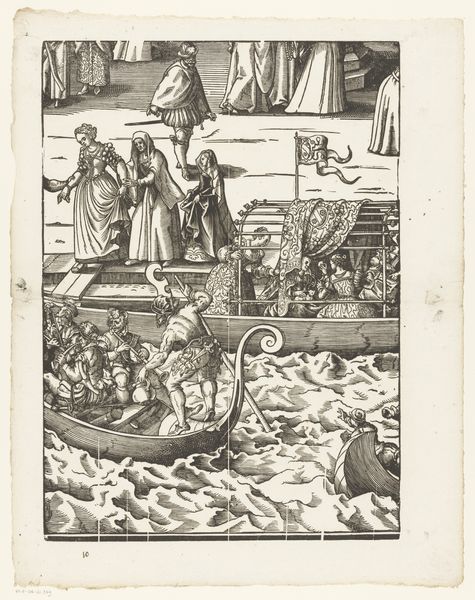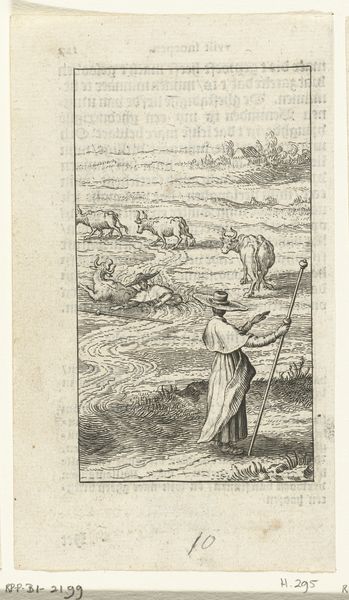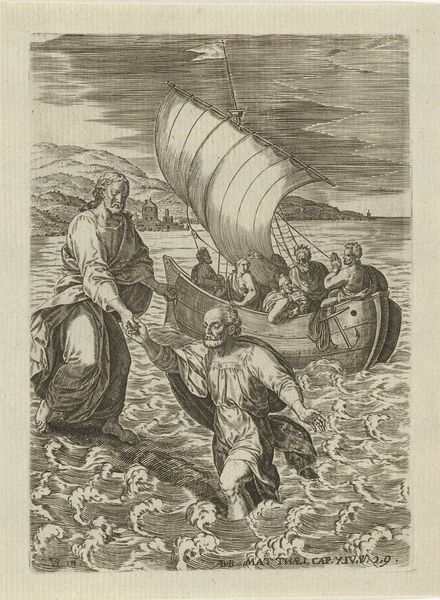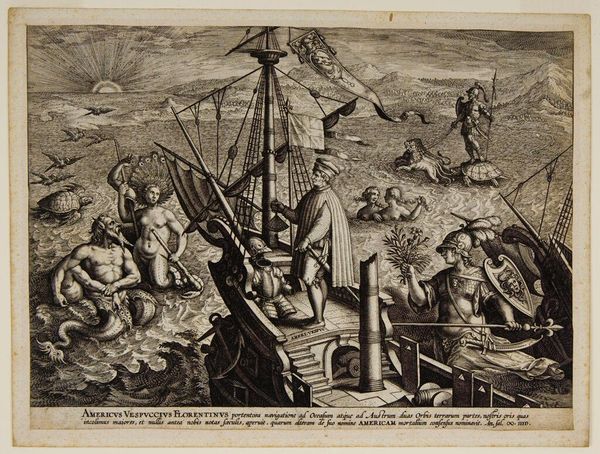
print, engraving
#
narrative-art
# print
#
mannerism
#
history-painting
#
engraving
Copyright: National Gallery of Art: CC0 1.0
Curator: Welcome. Let's consider "Follow Me and I will Make You Fishers of Men," an engraving dating back to around 1576-1580, crafted by Léonard Gaultier. Editor: What strikes me first is the controlled chaos of the lines. The artist uses hatching and cross-hatching to create depth, yet the overall effect is almost decorative. There's a tension between representation and pattern. Curator: Indeed. Gaultier presents us with a pivotal narrative scene: Christ calling the apostles Simon and Andrew, promising them a transformation of purpose, from fishing for sustenance to fishing for souls. Considering the religious conflicts brewing in Europe at this time, this piece resonates with themes of conversion and allegiance. The figure of Christ actively pursues converts. Editor: The composition is quite Mannerist. Notice the elongated figures, their dramatic poses. Look at the disproportionate boat, awkwardly positioned at the pictorial front, yet so intricately detailed in its construction. Curator: Absolutely. And thinking about social hierarchies in 16th-century Europe, the act of choosing humble fishermen becomes a radical statement. The print elevates these marginalized figures to positions of spiritual leadership, a critique of established authority that the intended audience would have immediately registered. The piece can also be interpreted in the context of the Counter-Reformation’s active approach to combating the reformation with the goal to retain believers or reconvert those who have left. Editor: What are we to make of that very active water surface that meets such architecturally precise shoreline? Even the waves participate in that Mannerist artifice we discussed. This water is far from any observable truth, and I would call the perspective forced in order to place as many references in the composition as possible. Curator: Perhaps we can say the unnatural blending of natural and unnatural references reflects the spiritual promise held within the narrative. This merging reflects a world on the cusp of metaphysical transformation. Editor: It is a fascinating perspective to hold and I suppose it may illuminate how the materiality is an attempt to mirror that conversion, especially considering how print-making made religious themes accessible to larger audiences. Curator: I agree that seeing the print in that way creates connections with the Counter-Reformation efforts that sought a very direct channel with audiences in order to promote the Catholic vision. Editor: Ultimately, I’m left with the stark beauty of Gaultier's technique. The engraving captivates the eye, its artifice a testament to its enduring power as a symbolic object. Curator: And for me, reflecting on the work today underscores the ongoing power dynamics inherent in belief systems. A centuries old call echoes even in modern dialogues, urging continuous transformation.
Comments
No comments
Be the first to comment and join the conversation on the ultimate creative platform.
